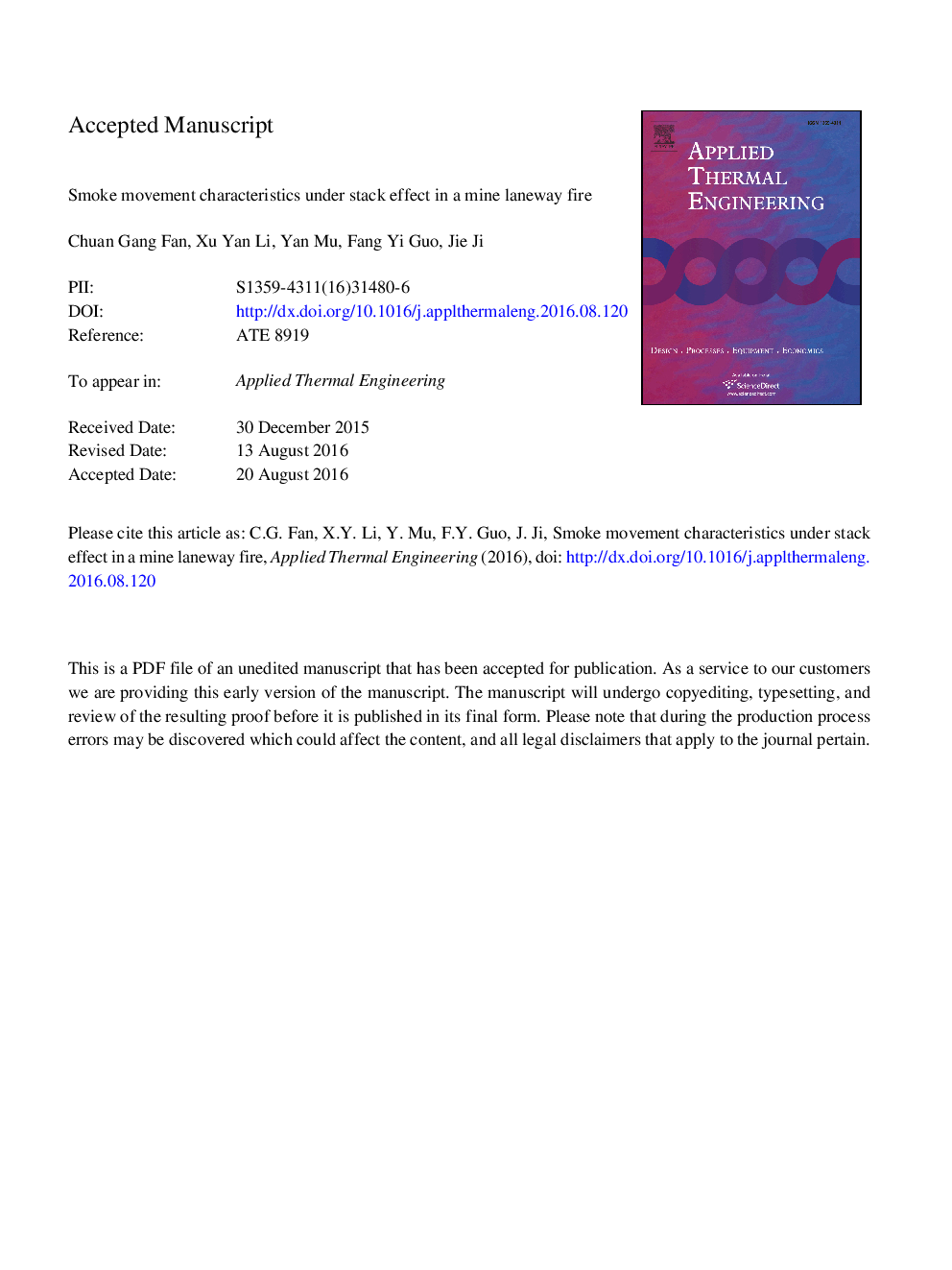| Article ID | Journal | Published Year | Pages | File Type |
|---|---|---|---|---|
| 4991994 | Applied Thermal Engineering | 2017 | 32 Pages |
Abstract
Results from a series of simulations with regard to a mine laneway fire are presented. Large Eddy Simulation with Fire Dynamics Simulator was carried out for a fire located in a horizontal laneway, with investigating the smoke movement under the influence of stack effect formed inside an inclined laneway. The length and angle of the inclined laneway were systematically changed to show the influence of stack effect on the smoke characteristics, involving smoke temperature, smoke spread process and smoke backflow. Results show that as the stack effect is proportional to both length and angle of the inclined laneway, increasing either length or angle of the inclined laneway will contribute to decreasing the backflow length in the horizontal laneway and thus leading to more smoke flowing into the inclined laneway. A non-dimensional number Ri was proposed to demonstrate the coupled influence of length and angle of the inclined laneway on smoke movement, which can well distinguish whether there is a smoke backflow upstream of the fire or not. The critical value of Ri was found to be 100. For cases without backflow at the steady period of smoke movement, the time when the backflow disappears decreases with the increasing vertical height of the inclined laneway, and the data can be correlated well by an exponential expression. For all cases, the mass flow rate of smoke flowing into the inclined laneway increases with the increasing vertical height of the inclined laneway exponentially.
Related Topics
Physical Sciences and Engineering
Chemical Engineering
Fluid Flow and Transfer Processes
Authors
Chuan Gang Fan, Xu Yan Li, Yan Mu, Fang Yi Guo, Jie Ji,
